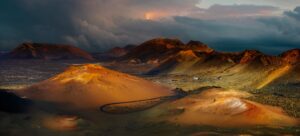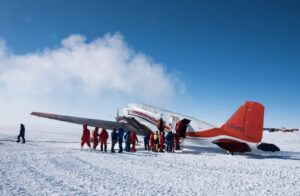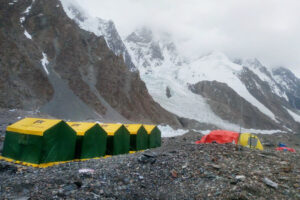By Jamal Shahid
Garret Madison climbs 8,000 metre plus peaks around the world four or five times a year. The American explorer has been climbing mountains for the last two decades and has climbed Mount Everest nine times, the fourth highest peak in the world, Lhotse three times, Mount Vincon 12 times and Mount Aconcagua a dozen times.
“I am not married and do not have children, dogs and cats or plants.
I climb the year around,” he said on Wednesday, before heading off north to attempt a summit of K2 for the second time.
Founder of Madison Mountaineering, he is leading a 24-member expedition of veteran climbers from Ireland, Japan, Estonia and the Czech Republic on the K2. Dawn caught up with Madison and talked to him about his experience climbing mountains.
Q: How is climbing Mount Everest different from climbing K2?
A: There is no comparison between the two mountains. The 80-mile trek to K2 base camp alone is double the 35-mile trek to base camp at Mount Everest.
The K2 trek is a lot more rugged and goes through rock and ice and is continuously ascending, with no human settlement at all.
The trek to Mount Everest is undulating, dotted with villages, coffee shops and helipads.
Mount Everest is taller but K2 is more challenging technically and demands more respect. It is steeper with higher risks of rock fall and avalanche.
Unlike the Everest, K2 has its own unpredictable weather systems with temperatures at the summit dropping 50°C below. More attention is turning towards the second highest peak in the world from the more commercialised and easier Mount Everest.
The prize is more valuable if you reach the summit and return safely.
Q: What is the death zone and why do climbers need supplemental oxygen?
A: The death zone starts above 8,000 metres on the mountain where the human body suffers due to less pressure, less oxygen, cold and hypothermia and that is where climbers want to spend as little time as possible.
More deaths happen in this zone when climbers make the mistake of sitting down to rest and are later unable to get back on their feet.
They become incapacitated and unaware of making mistakes due to less oxygen and fatigue.
I prefer to climb with a bottle of oxygen because I lead my expeditions and need to take care of my body and prevent brain damage.
That is necessary for me to ensure the safety of other team members and so I can lead a happy life and climb more.
We do not pull the trigger for a summit push till the weather is absolutely clear because it can easily take an entire day above the death zone.
Q: How do you think Pakistan fares as a tourist destination?
A: I had many questions and doubts in my mind after the terror incident in June 2013 at the Nanga Parbat base camp. Nonetheless, I came to Pakistan the following year to climb K2. I returned in 2015-16 to climb K2 again and wanted to come again in 2017. Climbing in Pakistan has been a wonderful experience and I plan on returning again and again.
Published in Dawn, June 21st, 2018
For more live updates, follow Dawn.com’s official news Instagram account@dawn.today
https://www.dawn.com/news/1415015/living-colours-mount-everest-is-taller-but-k2-is-more-challenging





